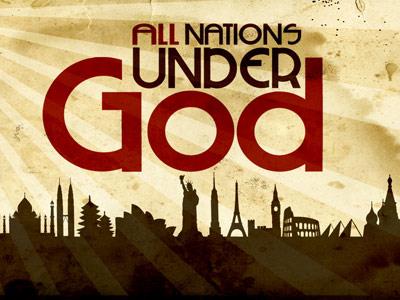-
Daniel's Vision Of The Ram, The Goat, And The Little Horn Series
Contributed by Jerry Cosper on Feb 23, 2022 (message contributor)
Summary: What we will see in this chapter is a clear picture of ruler's denying the Lord and trampling people underfoot, both believers and unbelievers.
Tonight we enter into chapter 8 in the book of Daniel. At this point in history, Israel had lost everything and were exiled into Babylon. God knew that His people needed some kind of encouragement. So, from this point on, chapters 8 through 12, the Scripture was originally written in Hebrew. That signifies that it is speaking specifically to the Israeli people of that day.
I am going to cover a lot of actual history that you don't see in the Scriptures this evening. This is just to show you that the vision that Daniel received at this point has already occurred.
What we will see in this chapter is a clear picture of ruler's denying the Lord and trampling people underfoot, both believers and unbelievers. Down through history, many rulers have been tyrants driven by a fierce craving for more power or territory. In some instances, the rulers have been filled with prejudice, a bitter hatred against a particular race or nation. As we look at these visions that Daniel was given, we need to picture the horrors of war with the catastrophic injuries and death inflicted upon people as well as the cruel oppression, subjection, and suffering of the survivors. These are the very focus of Daniel's vision, in particular pertaining to God's people.
Daniel 8:1-2. Daniel received this vision in the third year of Belshazzar's reign, which was probably 550 B.C. In his vision, Daniel saw himself at the fortress of Susa or Shushan standing by the Ulai River, a canal that had been built to provide water for the fortress city.
Susa was about 200 miles east of Babylon and 150 miles north of the Persian gulf. Even though the city was the capital of Elam, it wasn't that important to Babylon. Later it will become one of the royal cities of the Persian empire. From a biblical perspective, Esther and Nehemiah were prominent citizens of Susa.
In the vision, Daniel saw a large, powerful ram, which represented Medo-Persia. We know that because we are told that in verse 20. (Read.) Daniel noticed two significant features about the ram. First, the ram had two long horns, but one horn was longer than the other even though it started to grow later than the first. This refers to the fact that Persia was initially less powerful than Media. But under the leadership of Cyrus, Persia eventually conquered Media and united the two nations to become the great Medo-Persian empire.
Second, the ram was unstoppable as it charged west, north, and south. In it's terrorizing charge west, the ferocious ram conquered Babylon, Syria, and Asia minor. It even invaded certain areas of Greece. To the north, this ram, which is Persia, conquered several other areas. Moving southward, Cyrus and his successors conquered Egypt and Ethiopia. No nation was able to withstand the powerful and cruel attack of Medo-Persia. This terrifying beast did as it pleased and became the largest empire up until that time in human history.
Daniel 8:5-8. Suddenly, Daniel saw in his vision a swift, angry goat with one very prominent and large horn. This angry goat represented Greece and Alexander the great. Daniel described five features of the goat. First, the goat (Alexander the Great) came from the West, swiftly crossing the entire Earth without even touching the ground.
Second, the goat was filled with rage as he attacked the two-horned ram which was Medo-Persia. Within two years of succeeding his father as king, Alexander launched his fierce attack against the Persian empire. Apparently, Alexander's rage against the Persians came about because of the raids that the Persians had formally made into Greece.
Third, the angry goat attacked the ram with intense power. When the goat struck the ram that had two horns, it represented Alexander's destroying both Media and Persia, trampling the empire into the ground. Medo-Persia was completely helpless before the raging Alexander the Great. And no other power on Earth could save the Persian empire from the mighty power of the young Greek conqueror.
Fourth, Greece became a great empire under Alexander the great, conquering most of the known world of that day. But due to his success, he became increasingly prideful and arrogant, even exalting himself as a god. He either pretended to be or actually thought himself to be a god, because he required the soldiers in various districts of his empire to bow and worship him as a god. Worshiping rulers was a custom in some of the Oriental Nations he conquered, but the great battalions of his own troops rebelled against that policy.
At the height of Grecian power, the large horn of the goat was broken off. That means that Alexander the Great died due to a sudden fever at the age of 33. After his death, various leaders of Greece made attempts to hold the empire together but were unsuccessful. As scripture says, the large horn of the goat was replaced by four prominent horns. This simply means that four prominent military commanders divided the empire among themselves. You might remember us discussing that in chapter 7.

 Sermon Central
Sermon Central



